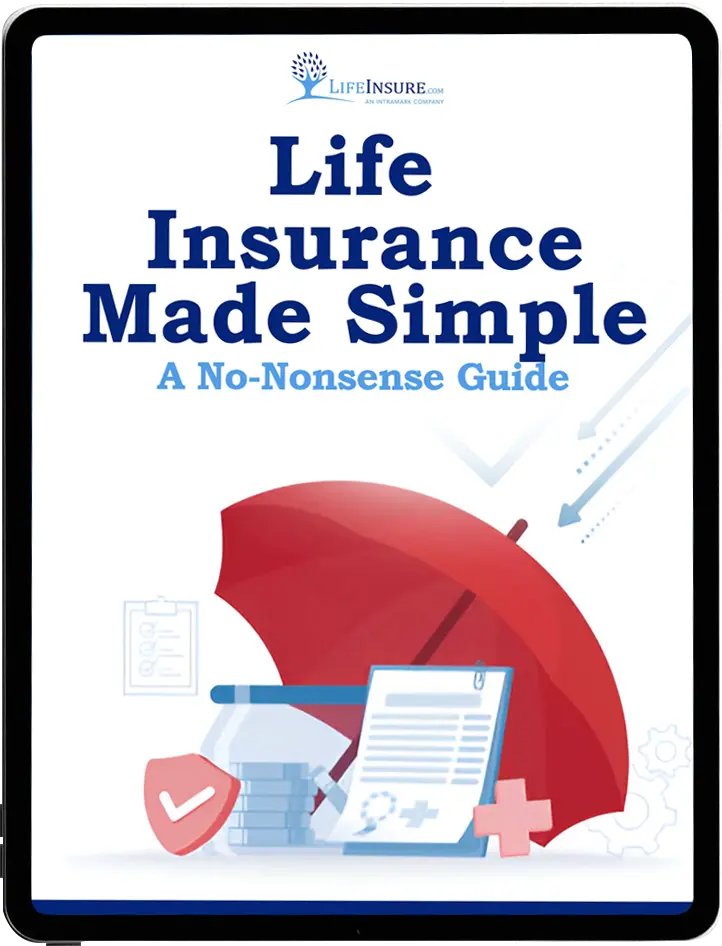
Life insurance is a contract between an individual and an insurance company, where the company pledges to pay a designated beneficiary a sum of money upon the death of the insured person. The very essence of life insurance is to provide financial protection and assurance to loved ones in the event of unforeseen circumstances, ensuring they’re taken care of in your absence.
Broadly categorized, there are two main types of life insurance: term and permanent. Each has its unique features, benefits, and considerations, making it essential to understand their differences before selecting the best product for your circumstances, needs, and budget.
Understanding Term Life Insurance
Term life insurance provides coverage for a specified “term” or period, such as 10, 20, or 30 years. Should the insured individual pass away within this term, the beneficiaries receive the death benefit. If the term expires and the person is still alive, coverage ends unless it is renewed or converted into a permanent policy.
Like any insurance product, term life insurance has advantages and disadvantages that you need to consider before making a decision if it’s the right type of life insurance for you.
Benefits and Advantages of Term Life Insurance
- Affordability: Generally, term life policies have lower premiums compared to permanent life insurance, making them more accessible for many.
- Simplicity: These policies are straightforward, offering a death benefit without the complexities of investment options or cash values.
- Flexibility: As needs change, individuals can renew or upgrade to a different policy type.
Drawbacks and Limitations of Term Life Insurance
- Temporary coverage: Once the term ends, so does the coverage unless you opt to renew or convert.
- No cash value: Term life doesn’t accumulate any cash value over time, meaning there are no returns if the policy is canceled.
Understanding Permanent Life Insurance
Permanent life insurance is a comprehensive coverage solution designed to provide protection throughout an individual’s entire lifetime, provided the premiums are consistently paid. Unlike term insurance, which is designed for a specific duration, permanent life insurance remains active indefinitely.
Several distinguishing characteristics set permanent life insurance apart:
- Lifelong Protection: As long as the premiums are met, the policy remains in force, ensuring beneficiaries will receive the death benefit regardless of when the insured person passes away.
- Cash Value Accumulation: A unique aspect of permanent life insurance is its cash value component. A portion of the premiums paid goes into a cash value account, which grows over time on a tax-deferred basis. This cash value can be borrowed against, used as collateral, or even withdrawn in certain circumstances.
- Flexible Premiums and Benefits: Certain types of permanent life insurance allow policyholders more control over premium payments and death benefits.
- Potential Dividends: Some permanent life insurance, specifically participating whole life policies issued by mutual insurance companies, may earn dividends. While not guaranteed, these dividends can be used to purchase additional coverage, reduce premiums, or even be received as cash.
- Tax Advantages: The growth of cash value in a permanent life insurance policy is tax-deferred, meaning you won’t pay taxes on the gains while they’re accumulating. Additionally, the death benefit received by beneficiaries is typically tax-free.
Types of Permanent Life Insurance to Consider
Permanent life insurance comes in several types with each providing different benefits than the other. Although permanent life insurance in many cases satisfies the needs of the policyholder, there are three primary types that can accomplish this.
Whole Life Insurance
Whole life insurance, as the name suggests, is designed to provide lifetime coverage for the policyholder. Unlike term insurance, which offers protection for a specified period, whole life insurance guarantees a death benefit to the beneficiaries as long as premiums are paid throughout the policyholder’s life. The predictability of the death benefit, coupled with consistent premium amounts, makes whole life insurance a preferred choice for many seeking long-term security.
One of the most distinguishing features of whole life insurance is its cash value component. A portion of the premiums paid not only goes towards securing the death benefit but also contributes to a cash value account. This account grows over time, often at a guaranteed rate set by the insurance company, on a tax-deferred basis. Policyholders can borrow against this cash value or even withdraw from it under certain conditions, offering an additional layer of financial flexibility. Over time, with consistent premium payments and the accumulation of cash value, a whole life policy can also become an asset in one’s financial portfolio.
If the applicant elects to purchase whole life insurance from a mutual insurance company, the policyholder can share in the company’s financial success. When the insurer performs well and generates excess profits, it may distribute a portion of those profits to the policyholders in the form of dividends. It’s important to note that while these dividends are not guaranteed, they can provide a valuable source of additional returns.
Policyholders can often choose how they want to use these dividends: they can take them as cash, use them to reduce future premiums, reinvest them to purchase additional coverage, or allow them to accumulate interest within the policy. This potential for dividends, while contingent on company performance, offers a unique opportunity for policyholders to benefit from the profitability of their insurance provider.
Universal life insurance, a type of permanent life insurance, stands out because of its inherent flexibility. Unlike whole life insurance, where premiums and death benefits are often fixed, universal life insurance allows policyholders to adjust these based on their changing financial circumstances and needs. At its core, universal life combines a death benefit with a savings component, often referred to as the policy’s cash value. The interest earned on this cash value is typically pegged to a financial index or the insurer’s portfolio performance but with a guaranteed minimum interest rate to ensure some level of growth.
A popular variant of universal life insurance is indexed universal life (IUL). IUL policies earn interest based on the performance of an external market index, like the S&P 500. It’s crucial to understand that with IUL, policyholders aren’t directly investing in the stock market. Instead, they have the potential to earn returns based on the index’s performance, subject to certain caps and floors.
This means that if the chosen index performs well, the cash value might increase up to a predetermined cap. Conversely, if the index performs poorly, the cash value won’t decrease below a specified floor, ensuring that the policyholder’s interest rate never dips below zero. This structure allows for growth potential while providing a safety net against market downturns.
Variable Life Insurance
Variable life insurance is a type of permanent life insurance that combines the protective features of a death benefit with the potential for investment growth. Unlike other life insurance types where the cash value’s growth is either guaranteed or tied to an index, variable life insurance allows policyholders to allocate their cash value among various investment options, typically consisting of stock, bond, and money market sub-accounts. This means the policy’s cash value and, consequently, the death benefit can fluctuate based on the performance of these chosen investments.
While this structure offers a higher growth potential, it also comes with increased risks. The policy’s value can go up during prosperous market conditions, but it can also decline during market downturns. Therefore, variable life insurance is best suited for individuals who are knowledgeable about investments, comfortable with market volatility, and looking for both life insurance protection and a vehicle for potential investment growth.
Benefits and Drawbacks of Permanent Life Insurance
As we mentioned earlier, all life insurance products inherently contain advantages and disadvantages. Not because of inherent product flaws but rather, the needs of the policyholder.
Benefits and advantages of permanent life insurance
- Lifetime coverage: Permanent life insurance doesn’t expire, offering peace of mind for a lifetime.
- Cash value accumulation: Part of the premium contributes to a cash value, which can be borrowed against or even withdrawn in some cases.
- Potential dividends: Some policies may pay dividends, providing an added financial advantage.
Drawbacks and limitations of permanent life insurance
- Higher premiums: These policies are typically more expensive than term life insurance.
- Complexity: Understanding investment components and varying structures requires more diligence.
- Lesser death benefits: Given the cash value component, the death benefit might initially be lower than that of term policies for the same premium.
Key Differences Between Term and Permanent Life Insurance
- Coverage duration and expiration While term life is for a specified duration, permanent life covers the entirety of one’s life.
- Premiums and affordability Term insurance usually offers lower premiums, whereas permanent life, with its cash value component, demands higher premiums.
- Cash value accumulation and investment options Only permanent life insurance offers cash value accumulation and investment possibilities, whereas term life does not.
- Considerations for different life stages and needs Term life might be suitable for younger individuals with financial obligations like mortgages or child-rearing, whereas permanent life can be beneficial for legacy planning or lifelong coverage.
Frequently Asked Questions
The main difference is in the length of coverage. A term life insurance policy provides coverage for a specific period of time, such as 10, 20, or 30 years. A permanent life insurance policy, on the other hand, offers lifelong coverage. Additionally, permanent policies have a cash value component that term policies do not.
A permanent life insurance policy has a cash value component that accumulates over time and can be accessed through a policy loan or withdrawal. This can be a valuable asset later in life, as it can be used as collateral or to supplement retirement income.
Term life policies typically have lower monthly premiums, making it a more affordable option for those on a tight budget. However, permanent life insurance rates can be more stable and predictable over time, making it a good option for those who want long-term financial protection.
Yes, it is possible to switch from a term policy to permanent coverage or vice versa. However, it is important to note that making a change can come with a cost, such as new premiums or policy fees.
Ultimately, the decision between term and permanent life insurance policies comes down to your individual needs and goals. Assess your current financial situation, future goals, and family’s needs to determine which type of policy is best for you. And remember, it’s never too early to start thinking about life insurance – the earlier you invest in a policy, the more cost-effective it can be in the long run.
To get more information about the various types of life insurance and to find the best fit for your circumstances, call the insurance professionals at LifeInsure.com at 866-868-0099 or contact us through our website.

Last Updated on November 11, 2024 by Richard Reich


